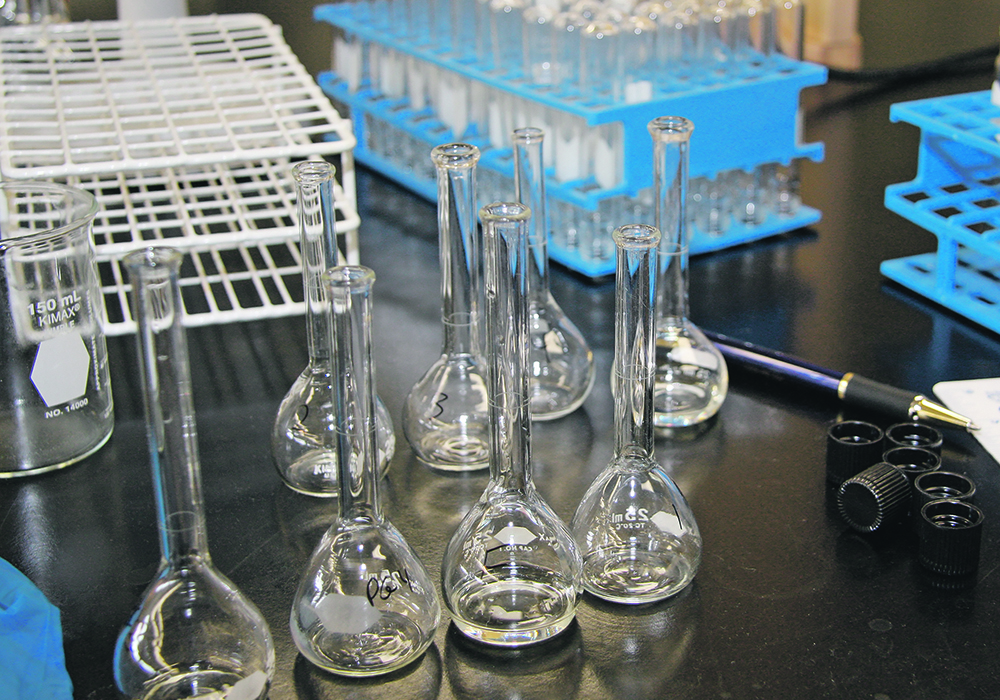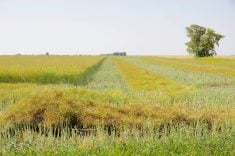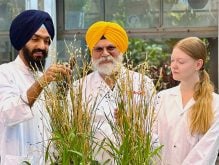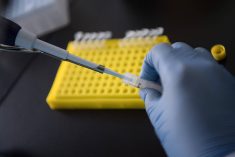Researcher says public is likely to accept gene editing technology because of its beneficial applications for public health
WINNIPEG — The amount of money and human resources directed at gene edited crops is staggering, says Kevin Folta, a University of Florida plant scientist.
China, India and other nations are dumping billions into the technology in efforts to improve agricultural productivity and sustainability.
“Colleagues of mine who are over there (China), their labs are flush with cash to do the work. Gene edit strawberries, gene edit apple trees, gene edit everything,” said Folta, who spoke mid-February at CropConnect, a conference hosted by a coalition of commodity groups in Manitoba.
Read Also

Heat waves combine sunshine and sinking air
As we continue our look at heat waves, I figured we should first define what they are by looking at the criteria Environment Canada uses to define heat events.
Folta is a well-known advocate of biotechnology and for years was a vocal defender of transgenic crops, pesticides and other technologies in agriculture.
At the meeting in Winnipeg, Folta said the public is likely to accept gene edited crops and the underlying technology because it has beneficial applications for public health.
“There are still some people out there screaming about it, but that opposition is getting weaker,” he said.
Genome editing, or gene editing, involves changing the genetic code of a plant with technology like CRISPR-Cas9, a technique used to cut sections of DNA. Scientists from California and France won the 2020 Nobel Prize in Chemistry for their discovery of CRISPR.
It allows scientists to precisely change a plant’s DNA to achieved desired traits, such as improved disease resistance or healthier oils in the kernel.
It is also being employed in medicine.
In December the U.S. Food and Drug Administration approved gene editing to treat sickle cell disease, a rare, genetic mutation that causes red blood cells to develop a crescent or “sickle” shape.
The misshapen cells restrict flow in blood vessels and limit oxygen delivery to the body’s tissues, causing severe pain and damage to organs.
“Gene therapy holds the promise of delivering more targeted and effective treatments, especially for individuals with rare diseases where the current treatment options are limited,” said Nicole Verdun of the FDA, in an agency press release.
Using gene editing to help people with rare diseases shows the public that this is a game changer, Folta said.
“In part because of its medical applications, I think you’ll see a very strong acceptance of these technologies.”
During his talk in Winnipeg, Folta shared a detailed list of gene editing research in agriculture on crops including potatoes, corn, wheat and canola.
“A lot of things are happening in canola…. Most of them have to do with oil quality,” he said.
“Also, clubroot resistance…. By deleting a gene for sensitivity to the pathogen, you can change the susceptibility to the pathogen. The gene edit now gives you resistance…. Good stuff there.”
However, much of the gene editing research on canola is happening outside Canada. Companies in Boston, California and Israel are investing in canola, but there’s less activity in Canada.
“I think there’s room to improve in Canada,” Folta said. “You need to be pushing for more money for private-public partnerships and more money for research…. You’ve got some great scientists here… giving them some more tools would be awesome.”
Last year, Alberta Farmer Express reported that public funding for crop science is shrinking, which limits gene editing research in Canada.
Part of the problem is that funding is not keeping up with inflation, said Stuart Smyth, a University of Saskatchewan professor who specializes in agri-food innovation and technology.
“There is less to go around…. Either fewer projects get selected or the same number of projects get funded and projects need to scale back.”
Smyth added that the agriculture industry can no longer rely on the government, so a different approach will be necessary.
“The days of expecting the federal government to fund everything are gone. We need public-private and producer partnerships,” he said. “Everybody is at the table, but I think the federal government needs to signal that movement.”
Canada may be lagging, but there’s an opportunity to catch up and build companies that become global leaders in seeds and traits.
The regulatory environment for gene edited crops is less onerous than the regulations for transgenic crops. Getting a transgenic crop or trait to market can cost tens of millions to cover the cost of food safety and environmental assessments. Only global companies with deep pockets and expensive lawyers can play that game.
Gene editing technology has changed that reality and is “democratizing” the world of plant science, Folta said.
“Right now, you’re seeing so many small companies popping up … that are using gene editing to improve crop plants.”
However, gene editing has limitations. The crucial traits in plants, like drought tolerance and nutrient use efficiency, are governed by dozens or hundreds of genes.
Plant scientists still need traditional plant breeding to solve the big challenges within global agriculture.
“It’s a tool, in addition to (plant breeding), not instead of,” Folta said. “I think it will be a part of every plant breeder’s toolbox going forward.”
















